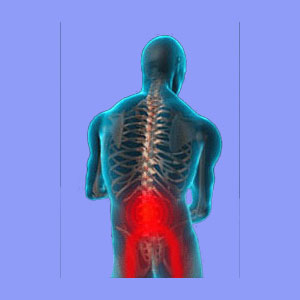
Sciatica and sports are close bed fellows, since so many professional athletes and weekend warriors alike all suffer from sciatic nerve pain. Some patients find relief in sports and physical activity, in general. However, other people find that strenuous or vigorous activity brings on symptoms or intensifies symptoms which already exist.
This editorial will investigate the link between sporting activities and sciatic nerve suffering. We will delve into the use of some sporting pastimes as sciatica treatment, as well as uncover why many patients suffer escalated symptomatic expressions when participating in athletic endeavors.
Sciatica and Sports Pain
Sciatica can be worsened through physical activity in some patients. Sometimes, this is due to a structural spinal condition which is activity or positionally-sensitive. Many patients find impact activities to be particularly brutal to bear, since these disturb already sensitized nerve compression problems in the spine. Other times, the activity plays a part in a psychosomatic pain condition and might relate to competition or fear of injury when the individual pushes themselves to participate in sports.
Structural conditions should be able to be successfully diagnosed and subsequently treated using appropriate medical care. Long lasting sciatica pain blamed on an anatomical source is typically misdiagnosed; since the body is designed to heal and heal it will. If this represents your situation, consider the possibility that your painful complaint has been mistakenly blamed on some incidental spinal abnormality. It happens all the time.
Sports-Related Pain Analysis
Patients who receive temporary sciatica relief from participating in physical activity are almost always suffering from ischemic symptoms, or a soft tissue condition, rather than a spinal causation. Sports, like all physical exertions, increase regional circulation, bringing more blood to the affected area and staving off the effects of cellular oxygen deprivation. This ischemic process is one of the more prevalent sources of chronic sciatica and is often tied to a psychosomatic causation, although the condition can be purely anatomically-induced, as well.
Your physician will be able to determine if there are any bodily contributors to the decreased oxygenation, including circulatory problems or disease processes.
Patients with this experience generally benefit from such symptomatic treatment options as physical therapy, exercises and sciatica stretches. However, these modalities are unlikely to enact a real and permanent cure, although they do provide temporary pain alleviation.
Piriformis syndrome, some sacroiliac joint concerns and muscle imbalances will usually all respond favorably to physical activity, as well. Be sure to keep these possible diagnostic explanations in mind if participation in sports brings this same temporary relief, despite having a diagnosed spinal pathology.
Sciatica and Sports Final Thoughts
Patients who have pain when performing some fitness activities, but not others are likely to also be suffering from mindbody sciatica. Some people can play basketball, for example, but feel pain whenever they compete in distance running. This is anatomically illogical, but the condition makes perfect sense when the laws of psychology are applied to the pain syndrome.
Athletes are generally perfectionistic and self motivated. These are 2 personality traits found in virtually all people who suffer from severe psychosomatic pain, regardless of where the symptoms choose to express themselves in the body. Keep this in mind as you search for an answer to your stubborn sciatic nerve symptoms.
I never would have believed that my personality type would have had anything to do with my chronic back pain. I suffered for 18 years, while wandering aimlessly through the medical system looking for relief. I must say that this was a most disappointing experience.
Finally, I discovered that my personality type did not only contribute to my pain; it actually helped to cause it. No wonder the plethora of treatments I tried had no positive effects. They were seeking to resolve an anatomical source of symptoms while all along, my pain was enacted by a combined process of body and mind.
I love sports and consider myself a serious athlete. I am competitive by nature and love to exert myself. I take great joy in all manner of physical activities. Of course, I always suffered from them, as is so common with chronic pain patients.
Recognizing the mindbody link in my own pain helped me to find real relief. I suggest that all every patient with chronic symptoms takes time to analyze how their personality type and emotional state may play a role in the causation, perpetuation or intensification of their symptoms. After all, it is a known scientific fact that our health is a combined process of mental and physical in all aspects of life. This introspection will help you to better understand the complex puzzle of sciatica and sports, and may even assist you in finding that elusive cure.





